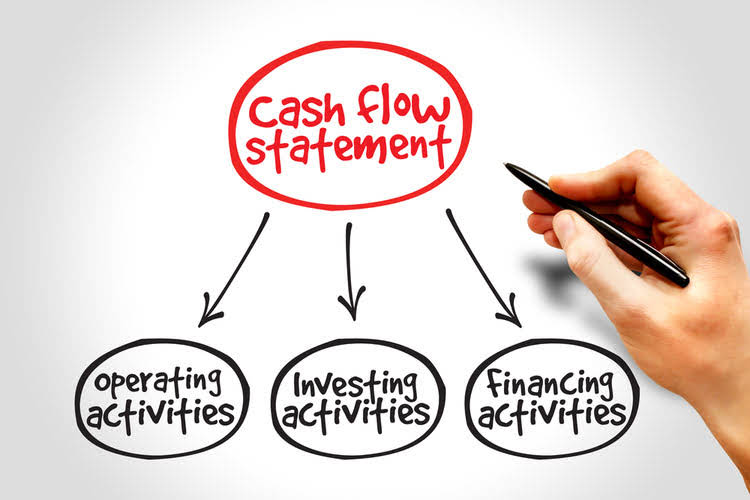Oil and gas companies: 2020 Q2 accounting, financial reporting, and regulatory developments Our Insights

Simply subtract the expenses from the revenue each year and then multiply by (1 – Tax Rate) to calculate the after-tax cash flows. oil accounting You do still see DCFs sometimes, but they are more common for midstream, downstream, and oilfield services companies. The good news is that most of the same valuation methodologies you’re used to seeing – public comps, precedent transactions, and even the DCF model – still apply to (most) oil, gas & mining companies. To get a sense of what the financial statements look like for a real company, click here to check out XTO Energy’s statements from just before they were acquired by Exxon Mobil. You see such high percentages because of the sky-high depreciation, depletion & amortization (DD&A) numbers for oil & gas companies and because many companies record them differently for book and tax purposes. Energy companies’ income statements do not have the usual Cost of Goods Sold / Gross Profit and Operating Expense distinction that you see for normal companies.
- The Financial Accounting Standards Board (FASB) issues several Accounting Standards Updates (ASUs) that impact oil and gas organizations.
- Proved reserves are typically broken down into two categories called developed and undeveloped.
- These costs include labor, maintenance, utilities, and materials used in the production process.
- This often involves detailed tracking of costs, production volumes, and sales proceeds, ensuring that each party receives its fair share of the revenue.
- These assessments rely on a combination of seismic data, well logs, and production history to create a detailed subsurface model.
- Regardless of industry, all publicly traded companies in the United States follow accounting principles set forth by U.S.
Oil and Gas Accounting – What is It?
If your company is on the lookout for high-quality oil and gas accountants, talk to EAG Inc.. We offer a host of helpful back-office administrative services designed to help you drive your business forward. We believe the oil and gas industry is at the beginning of the back-office technological revolution. Over https://www.instagram.com/bookstime_inc the next decade, companies will see a fundamental transformation of how they can eliminate waste, streamline accounting, and automate daily tasks, as well as reduce overall G&A. The more you can think outside the box to challenge the status quo, the more efficiencies you’ll gain in the long term.
- It is important to note oil still in the ground is not considered an asset until it is extracted and produced.
- Instead, the costs are spread out over time, allowing the company to earn revenue from the asset.
- One of the reasons why software for accounting has evolved so profoundly and is so important is that accounting processes require a lot of details and intricacies.
- LBO models are even more similar to what you see for normal companies, and just like with merger models you need to include a sensitivity analysis on commodity prices somewhere in your model.
- Under the Full Cost method (FC), most exploration and development costs are capitalized by an aggregated “cost pool” regardless of the outcome.
- There’s surprisingly little to say about merger models and LBO models in the oil & gas industry.
Oil & Gas Financial Statements – Projecting Revenue and Expenses
- Depletion specifically pertains to the allocation of the cost of natural resources, such as oil and gas reserves, over their productive life.
- Let’s have a more detailed look at what benefits oil and gas accounting software provides to businesses and business owners, and how to use it properly.
- Proved reserves are those with a high degree of certainty to be recoverable under existing economic and operational conditions.
- The good news is that most of the same valuation methodologies you’re used to seeing – public comps, precedent transactions, and even the DCF model – still apply to (most) oil, gas & mining companies.
- The more you can think outside the box to challenge the status quo, the more efficiencies you’ll gain in the long term.
- The good news is that while bank and insurance modeling is almost a different game entirely, oil & gas modeling is more like a variation on a game you’re already familiar with.
Proper accounting practices build trust among investors, regulators, and the public, fostering confidence in the industry. In April 2020, the CAQ issued a publication to provide a high-level overview of SEC requirements and guidance around non-GAAP reporting and the potential impact of COVID-19 on that reporting. Companies may adjust or tailor the non-GAAP financial measures and performance metrics they typically present because of COVID-19-related factors.
- International Oil & Gas Accounting is a company based in New York, NY that specializes in providing accounting services tailored to the oil and gas industry.
- Course DescriptionOil and gas operations have some of the most unique accounting issues found in any industry.
- You can roll up most niche accounting functions into one of those six primary functions because all industries have capital expenditures, operating costs, G&A, revenue, and production.
- This can vary depending on whether the sale is made at the wellhead, at a processing facility, or at the point of delivery.
- Information is considered material if its omission or misstatement could influence the economic decisions of users.
- Production costs are typically expensed as incurred, directly impacting the income statement.
Amendments to financial disclosures about acquired and disposed businesses

Effective management of production costs is vital for maintaining profitability, especially in a https://www.bookstime.com/ market characterized by volatile commodity prices. Companies often employ cost-control measures and technological advancements to optimize production efficiency and reduce expenses, thereby enhancing their financial performance. Depletion, depreciation, and amortization (DD&A) are essential accounting practices in the oil and gas industry, reflecting the gradual consumption of capital assets over time.


You focus on Production and Development expenses here, both of which may be linked to the company’s production in the first place. Then, you’d multiply the production volume times the average price each year for all commodities to get the revenue by year. Instead, you assume that the company adds nothing to its reserves and that it produces 100% of its reserves until it runs out of natural resources completely. You always capitalize acquisitions and development (actually constructing the field or well), and you always expense production. The good news is that while bank and insurance modeling is almost a different game entirely, oil & gas modeling is more like a variation on a game you’re already familiar with.

